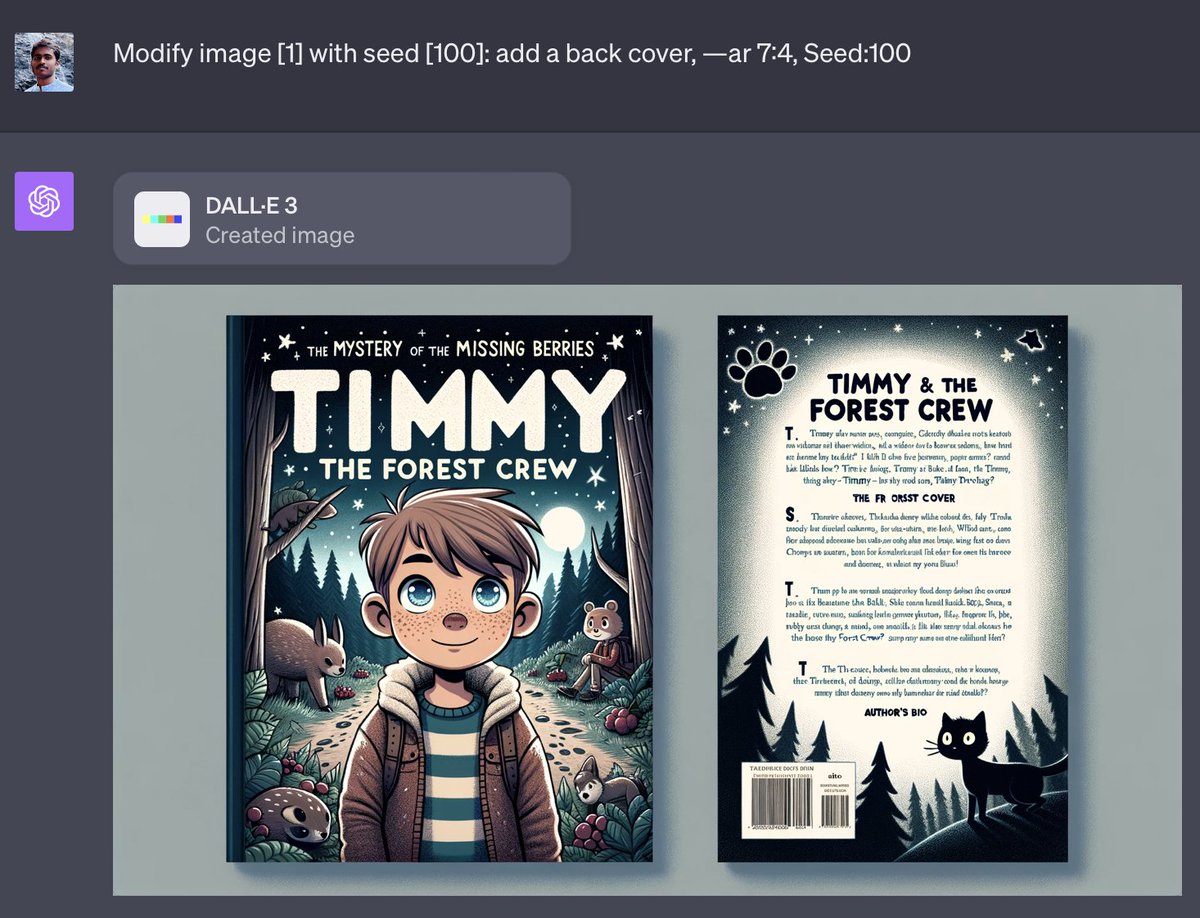https://twitter.com/sairahul1/status/1719272993191268858
Anyone can earn $3,000/mo passively with Children's comic books
Sadly, most people think it requires too much time, creativity and money.
Here’s how to do it, easily in an hour, for FREE:
Sadly, most people think it requires too much time, creativity and money.
Here’s how to do it, easily in an hour, for FREE:

Step 1: Choose your topic.
Consider popular topics like animals, vehicles, fairies etc.
You can also use ChatGPT to generate ideas.
I choose comic book with animals, since I like them.
Consider popular topics like animals, vehicles, fairies etc.
You can also use ChatGPT to generate ideas.
I choose comic book with animals, since I like them.

Step 2: Describe your main character
After choosing your topic, ask chatGPT to describe your main character features, like hair, face, eye, age etc.
We need this to make our character consistent.
After choosing your topic, ask chatGPT to describe your main character features, like hair, face, eye, age etc.
We need this to make our character consistent.

Step 3: Write the entire story
Now ask ChatGPT to come up short story with title, scene text and poster.
You will be using "Action" in creating comic illustrations.
Note down the characters too, seperately, which we will also be using in illustration.
Now ask ChatGPT to come up short story with title, scene text and poster.
You will be using "Action" in creating comic illustrations.
Note down the characters too, seperately, which we will also be using in illustration.

Step 4: Generate comic illustration
Prompt: "Comic illustration of a <main charter>. <scene action>, —ar 7:4, Seed:100"
Prompt: "Comic illustration of a <main charter>. <scene action>, —ar 7:4, Seed:100"

Details of the prompt:
main charter: get from step 2
scene action: get these from every scene in step 3
—ar 7:4: for horizontal long size (change according to your size)
Seed:100: for maintaining character consistency
Remember, you can always regenerate until you are satisfied
main charter: get from step 2
scene action: get these from every scene in step 3
—ar 7:4: for horizontal long size (change according to your size)
Seed:100: for maintaining character consistency
Remember, you can always regenerate until you are satisfied
Step 5: Book cover
You can ask the DALL E to create book cover with the generated images, along with title.
You can ask the DALL E to create book cover with the generated images, along with title.

Step 6: Create in comic book style
You can do so using Canva, by adding the generated illustrations and the scene text.
Template for this: bit.ly/47bpiB5

You can do so using Canva, by adding the generated illustrations and the scene text.
Template for this: bit.ly/47bpiB5

Step 7: Upload your content to Amazon KDP.
KDP is effective for selling printed children's books, as they tend to perform exceptionally well on this platform.
One of the key advantages of Amazon is its extensive reach, making it one of the most prominent publishers available.
KDP is effective for selling printed children's books, as they tend to perform exceptionally well on this platform.
One of the key advantages of Amazon is its extensive reach, making it one of the most prominent publishers available.
Step 10: Pricing
Compare other similar books in the same category
Try to match and lower them to make it affordable to masses.
Compare other similar books in the same category
Try to match and lower them to make it affordable to masses.

Step 9: Marketing
Consider running Amazon ads.
Most effective marketing activities for promoting a new book.
Best part is that Amazon provides the option to run ads on their platform for as little as $1 a day.
Consider running Amazon ads.
Most effective marketing activities for promoting a new book.
Best part is that Amazon provides the option to run ads on their platform for as little as $1 a day.
Thanks for reading.
By the way, I also run an agency that specializes in AI+Automation.
If you're a business owner looking to:
- Automate your business
- Increase leads and growth
- Incorporate AI into your everyday workflow
Book a call today at xautomate.io

By the way, I also run an agency that specializes in AI+Automation.
If you're a business owner looking to:
- Automate your business
- Increase leads and growth
- Incorporate AI into your everyday workflow
Book a call today at xautomate.io

That's a wrap ✨
Hope you enjoyed it.
If you found this thread valuable, please:
1. Follow me @sairahul1 for more.
2. Like/Retweet the first tweet below to share it with your audience.
Hope you enjoyed it.
If you found this thread valuable, please:
1. Follow me @sairahul1 for more.
2. Like/Retweet the first tweet below to share it with your audience.

 Read on Twitter
Read on Twitter

